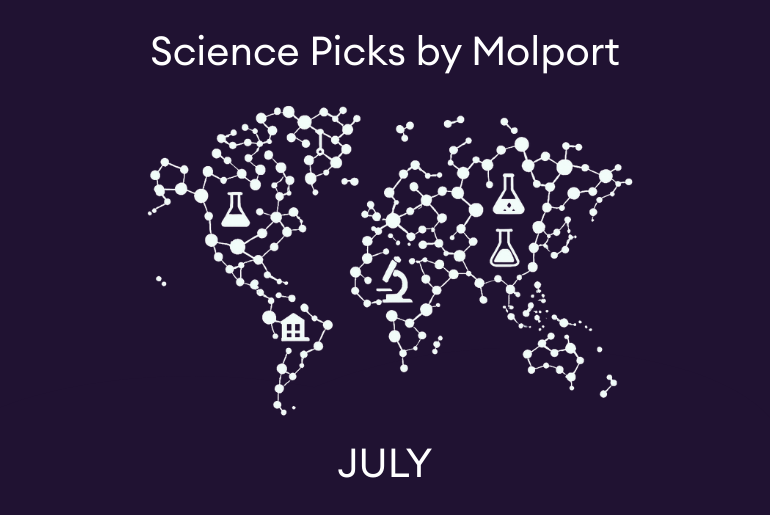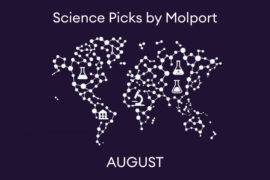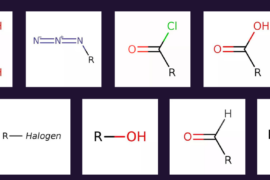July 28th
Discovery of a New Class of Orexin 2 Receptor Agonists as a Potential Treatment for Narcolepsy
https://pubs.acs.org/doi/abs/10.1021/acs.jmedchem.5c00362
Abstract
The orexinergic system, projecting from the lateral hypothalamus, operates through two receptors, orexin receptor type-1 (OX1) and orexin receptor type-2 (OX2), stabilizing wakefulness, mainly via OX2. Narcolepsy Type 1 (NT1) is characterized by excessive sleepiness and cataplexy, and is linked to a loss of orexin-producing neurons. Current therapies manage the symptoms but do not address the underlying cause of the disease. For example, psychostimulants (e.g., modafinil) reduce excessive daytime sleepiness (EDS) and sodium oxybate (gammaaminobutyric acid receptor agonist) reduces both EDS and cataplexy. Despite decades of research, no small-molecule OX2 agonist has reached the market. This study presents the discovery of two new brain-penetrant, orally bioavailable OX2 agonists with a phenylglycine-like scaffold. These compounds stabilized wakefulness and reduced cataplexy in a mouse model of NT1. In healthy dogs, they increased time in wakefulness. These results highlight their potential as treatment for narcolepsy and other types of hypersomnolence.
July 21st
Discovery of ATX968: An Orally Available Allosteric Inhibitor of DHX9
https://pubs.acs.org/doi/abs/10.1021/acs.jmedchem.5c00252
Abstract
DHX9 is an RNA/DNA helicase integral in the maintenance of genome stability that has emerged as an attractive target for oncology drug discovery. Disclosed herein is the discovery and optimization of a series of DHX9 inhibitors. Compound 1 was identified as a partial inhibitor of DHX9 ATPase activity but a full inhibitor of unwinding activity. Binding of 1 to a pocket distinct from the ATP binding site was confirmed by X-ray crystallography, enabling structure-based drug optimization. During this optimization, a sulfur–halogen bond was identified that increased on-target residence time without impacting equilibrium binding affinity. Analysis shows that cell potency more closely correlates with residence time than with equilibrium measurements of binding affinity or biochemical potency. Further optimization of potency and ADME properties led to the identification of ATX968, a potent and selective DHX9 inhibitor that is efficacious in a tumor xenograft model of microsatellite instability-high (MSI-H) colorectal cancer.
July 14th
Fragment-Based Discovery of Allosteric Inhibitors of SH2 Domain-Containing Protein Tyrosine Phosphatase-2 (SHP2)
https://pubs.acs.org/doi/10.1021/acs.jmedchem.3c02118
Abstract
The ubiquitously expressed protein tyrosine phosphatase SHP2 is required for signaling downstream of receptor tyrosine kinases (RTKs) and plays a role in regulating many cellular processes. Genetic knockdown and pharmacological inhibition of SHP2 suppresses RAS/MAPK signaling and inhibit the proliferation of RTK-driven cancer cell lines. Here, we describe the first reported fragment-to-lead campaign against SHP2, where X-ray crystallography and biophysical techniques were used to identify fragments binding to multiple sites on SHP2. Structure-guided optimization, including several computational methods, led to the discovery of two structurally distinct series of SHP2 inhibitors binding to the previously reported allosteric tunnel binding site (Tunnel Site). One of these series was advanced to a low-nanomolar lead that inhibited tumor growth when dosed orally to mice bearing HCC827 xenografts. Furthermore, a third series of SHP2 inhibitors was discovered binding to a previously unreported site, lying at the interface of the C-terminal SH2 and catalytic domains.
July 7th
A Perspective on the Strategic Application of Deconstruction–Reconstruction in Drug Discovery
https://pubs.acs.org/doi/abs/10.1021/acs.jmedchem.5c00036
Abstract
The deconstruction of known ligands to proteins into smaller, often fragment-sized components and subsequent regrowth from these leaner starting points has been shown to have interesting and useful application in medicinal chemistry. Such efforts can provide excellent start points for renewed hit-to-lead campaigns while assisting medicinal chemists in gaining a deeper understanding on the ligandability of a protein. Selected case-studies making strategic use of the deconstruction–reconstruction logic are examined herein, thus aiming to highlight the value of employing this approach in drug discovery programs.
July 1st
Discovery of a Potent, Selective, and Brain-Penetrant Checkpoint Kinase 1 Inhibitor, BEN-28010, for the Treatment of Glioblastoma
https://pubs.acs.org/doi/abs/10.1021/acs.jmedchem.5c00279
Abstract
Glioblastoma (GBM) patients face a dire prognosis and alternative therapeutic options are desperately needed. Inhibition of checkpoint kinase 1 (CHK1) represents a potential therapeutic strategy for GBM through regulation of the DNA damage response (DDR) pathway, but no suitable brain-penetrant CHK1 inhibitors have been reported to date. In this study, we disclose the discovery and optimization of clinical candidate 38 (BEN-28010) as a freely brain-penetrant, potent, and selective CHK1 inhibitor, derived from virtual screening hit 1. In vivo pharmacological studies demonstrated efficacy of orally administered 38 in several GBM CDX and PDX models as a monotherapy and in combination with ionizing radiation, including improved overall survival in an intracranially implanted GBM PDX mouse model. Additionally, 38 utilizes an underrepresented aminoimidazole kinase hinge-binding motif that may have broader utility within kinase inhibitor drug discovery.





